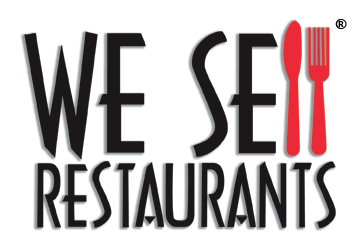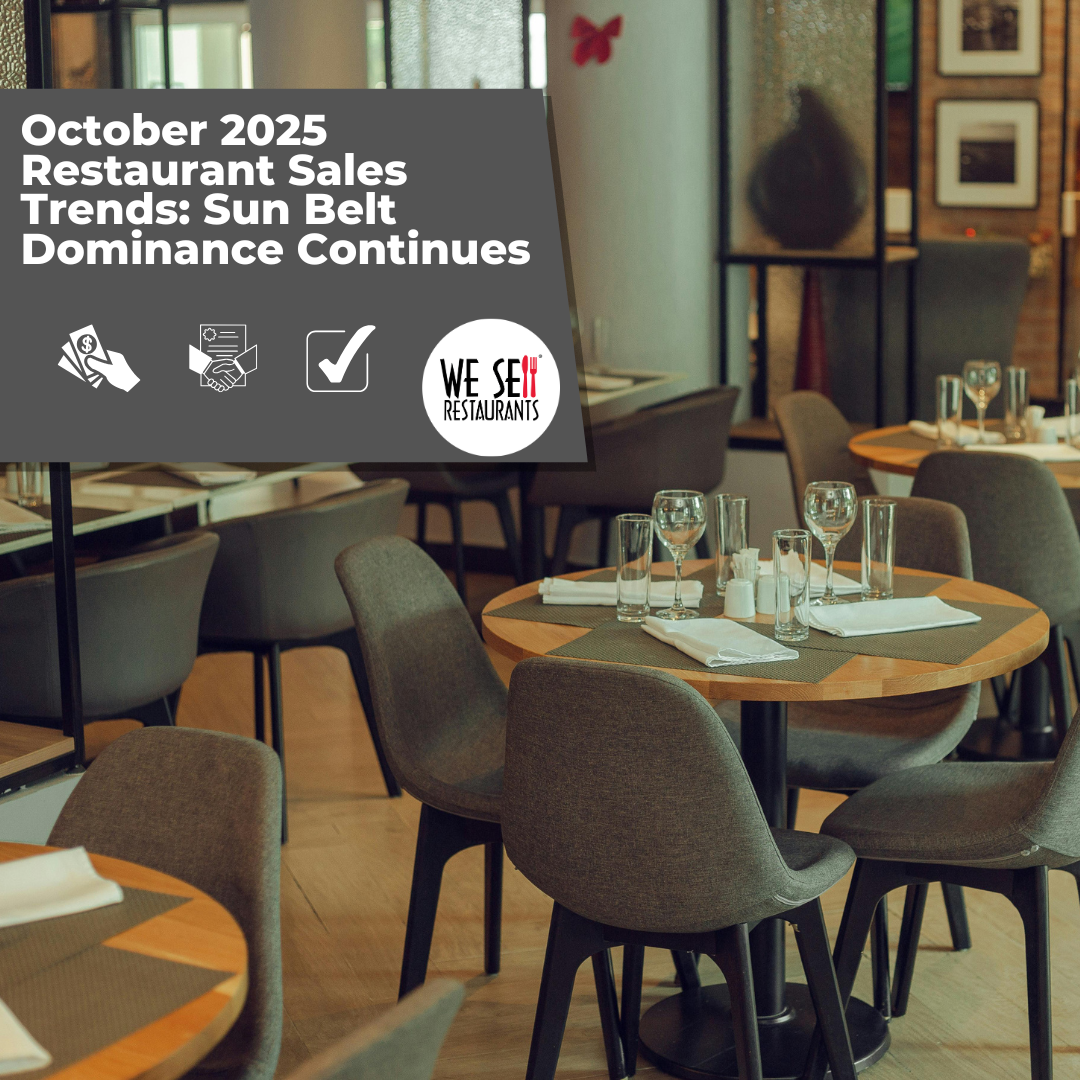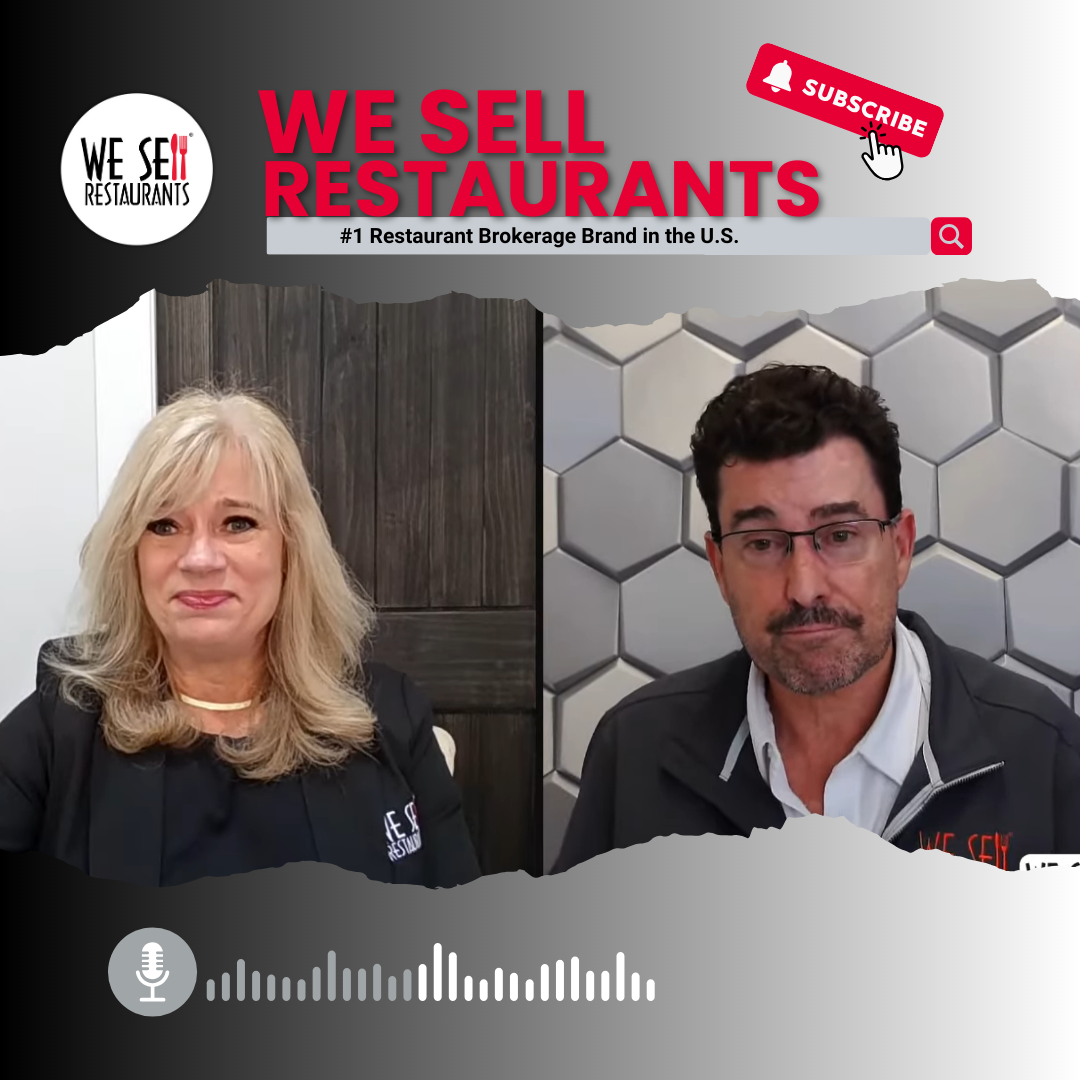Reading a restaurant listing offers clues—both obvious and subtle—about the health and potential of a business. While Certified Restaurant Brokers® have specialized training and credentials to evaluate these listings properly, not all brokers bring the same level of expertise to the table. Sometimes, the red flags begin with the listing copy itself.
Buying a restaurant can be a major financial and personal investment. Whether you're a first-time buyer or a seasoned restaurateur, purchasing the wrong restaurant can lead to unexpected costs, operational headaches, and disappointing returns. By learning how to spot red flags early in the evaluation process, buyers can avoid common pitfalls and move forward with confidence. This guide outlines the key warning signs to watch for when reviewing a restaurant listing.
Red Flag #1: Vague Financial Language — “Owner States” or “Subject to Verification”
Phrases like “Owner States” or “Subject to Verification” often indicate that verifiable financial documentation isn’t available. That doesn’t mean the deal is off-limits—some asset-only sales are valid opportunities if you’re bringing your own concept—but if your goal is to buy a cash-flowing business, this is a red flag.
Without transparent financials, buyers are left in the dark about how the business performs. Financing becomes unlikely, and decision-making relies on speculation rather than fact. At a minimum, expect consistent profit and loss statements that match filed tax returns. If you can’t verify the financials, you can’t trust the numbers.
Even with good revenue, a business may be overpriced. If a restaurant nets $50,000 but is priced at $500,000, something’s off.
Additional red flags:
- Significant price drops during the listing period
- No explanation for the valuation multiple
- Refusal to share comparable sales or benchmarks
Only Certified Restaurant Brokers use accurate valuation models, lending guidelines, and market comparables to price businesses correctly. If the price can’t be explained, it likely can’t be defended.
Red Flag #2: Incomplete or Inaccurate Financials
Some listings quote earnings as if they’re verified, but when asked for documentation, nothing materializes. This situation is more dangerous than vague language because it suggests misrepresentation.
Warning signs include:
- Missing or vague P&Ls for the past 2–3 years
- Heavy reliance on undocumented cash income
- Downward revenue trends without explanation
Request tax returns, POS reports, and bank statements. If the records don’t align—or can’t be provided—walk away or proceed with extreme caution.
Red Flag #3: Unfavorable Lease Terms or Undefined Lease Conditions
The lease is often one of the most important parts of the deal. When a listing says the lease is “subject to negotiation” or “a new lease will be created,” you must tread carefully. These situations create uncertainty that can derail the deal.
Insist on contingencies in your offer like:
“This offer is contingent upon securing a lease at no more than $____ per month for a term of _____ years with _____ options to renew.”
This protects you from inheriting a lease you can’t afford or commit to long term.
Also watch for:
- Short lease terms with no renewal options
- Rent that exceeds 10% of gross sales
- Landlords unwilling to assign or transfer leases
Always review the current lease with a Certified Restaurant Broker or attorney before proceeding.
Red Flag #4: Poor Online Reputation or Negative Customer Reviews
Public reviews shape brand perception—and in restaurants, reputation is everything. Research the business on Yelp, Google, and TripAdvisor before visiting or making an offer.
Red flags in reviews include:
- Repeated complaints about food, service, or cleanliness
- Drops in ratings after ownership changes
- No management responses to reviews
If you’re rebranding or changing the concept, a poor reputation may not matter. A fresh name and marketing campaign can reset customer perception. But if you're buying the brand as-is, you’ll inherit both its strengths and its baggage.
Red Flag #5: “Bring Your Own Concept” on an Operating Restaurant
If the listing promotes a thriving restaurant but also invites buyers to “bring your own concept,” something doesn’t add up. Why scrap a successful model?
This language usually signals that the current concept isn’t working and the sale is effectively an asset sale. If you’re looking for a turnkey business, this is a warning sign that you may be inheriting failure rather than success.
Red Flag #6: Overly Aggressive or Pushy Language
Phrases like “Won’t Last!” or “Act Now!” can be legitimate marketing tactics, but they can also signal desperation. A high-performing, fairly priced restaurant doesn’t require pressure tactics—it sells based on performance.
Take your time. Don’t let urgency-driven language rush you into a decision before you’ve done your due diligence.
Red Flag #7: No Photos or Only Stock Images
Listings with no interior or exterior photos, or those relying on generic stock images, may be hiding something—disrepair, clutter, outdated equipment, or poor presentation.
While confidentiality is important, there are ways to show visuals discreetly. Lack of photos suggests that the seller or broker is unwilling to be transparent about the business’s physical condition.
Red Flag #8: Extremely Low Asking Price Without Justification
If a listing is priced well below market, but claims strong earnings, something is off.
Possible explanations:
- The financials don’t support the price
- There are lease or landlord issues
- The business has hidden problems
- It’s actually an asset sale disguised as a business sale
Inexperienced general business brokers may misprice restaurants due to lack of industry knowledge. A Certified Restaurant Broker should be able to justify pricing with valuation methodology, comps, and lender qualification data.
On the other hand, some listings may demonstrate good revenue but still be overpriced. Even with good revenue, a business may be overpriced. If a restaurant nets $50,000 but is priced at $500,000, something’s off.
Additional red flags:
- Significant price drops during the listing period
- No explanation for the valuation multiple
- Refusal to share comparable sales or benchmarks
Only Certified Restaurant Brokers use accurate valuation models, lending guidelines, and market comparables to price businesses correctly. If the price can’t be explained, it likely can’t be defended.
Even with good revenue, a business may be overpriced. If a restaurant nets $50,000 but is priced at $500,000, something’s off.
Additional red flags:
- Significant price drops during the listing period
- No explanation for the valuation multiple
- Refusal to share comparable sales or benchmarks
Only Certified Restaurant Brokers use accurate valuation models, lending guidelines, and market comparables to price businesses correctly. If the price can’t be explained, it likely can’t be defended.
Red Flag #9: Non-Standard Operating Hours or Restaurant Is Closed
If a restaurant is only open a few days per week, or if its stated hours don’t match actual operations, ask why. The reason could be staffing shortages, lack of demand, or owner burnout.
This may not be a deal breaker if the issue is solvable, but it may indicate operational issues that need immediate attention.
Read this article: How to Be a Secret Shopper When Buying a Restaurant
Red Flag #10: Owner Handles All Major Operations
A listing that emphasizes the owner's hands-on involvement in every role—cooking, service, accounting, and more—might appear efficient. In reality, it often points to a non-scalable, unsustainable business.
If owner earnings are high, but the owner is working 60–70 hours per week, the valuation is inflated. That labor will need to be replaced, and payroll costs will rise. Ask for an org chart and labor breakdown before assuming you’re inheriting a “well-run” business.
Bonus Red Flag: High Employee Turnover or Labor Problems
A revolving door of staff can be a symptom of deeper cultural or operational issues.
Signs to watch for:
- Constantly replacing managers or chefs
- Low morale or negative employee reviews
- Inconsistent or unclear payroll figures
Ask for labor schedules, payroll summaries, and retention data. A stable team is often a good indicator of a well-managed operation.
Bonus Red Flag: Equipment Owned by the Landlord
Make sure the equipment list in the listing is complete and accurate. If the ad says “equipment owned by the landlord,” question what you’re actually buying. Are you paying for FF&E that doesn’t transfer?
Additional risks:
- Broken or obsolete equipment that needs replacing
- Deferred maintenance or cleanliness issues
- No warranties or service records available
Consider hiring a professional kitchen inspector to evaluate equipment and mechanical systems. These findings can impact both value and your upfront investment after closing.
Conclusion
Identifying red flags in a restaurant-for-sale listing isn’t about walking away from every deal—it’s about being informed. The more you understand what to look for, the more empowered you’ll be as a buyer.
Every listing tells a story. By asking the right questions, reviewing the financials carefully, and examining operational factors like leases and labor, you’ll be able to separate good opportunities from risky ones.
A Certified Restaurant Broker can help you interpret these signals, spot risks before they become problems, and structure a smart, secure transaction. When you’re ready to buy, make sure you’re buying right.

 404-800-6700
404-800-6700








